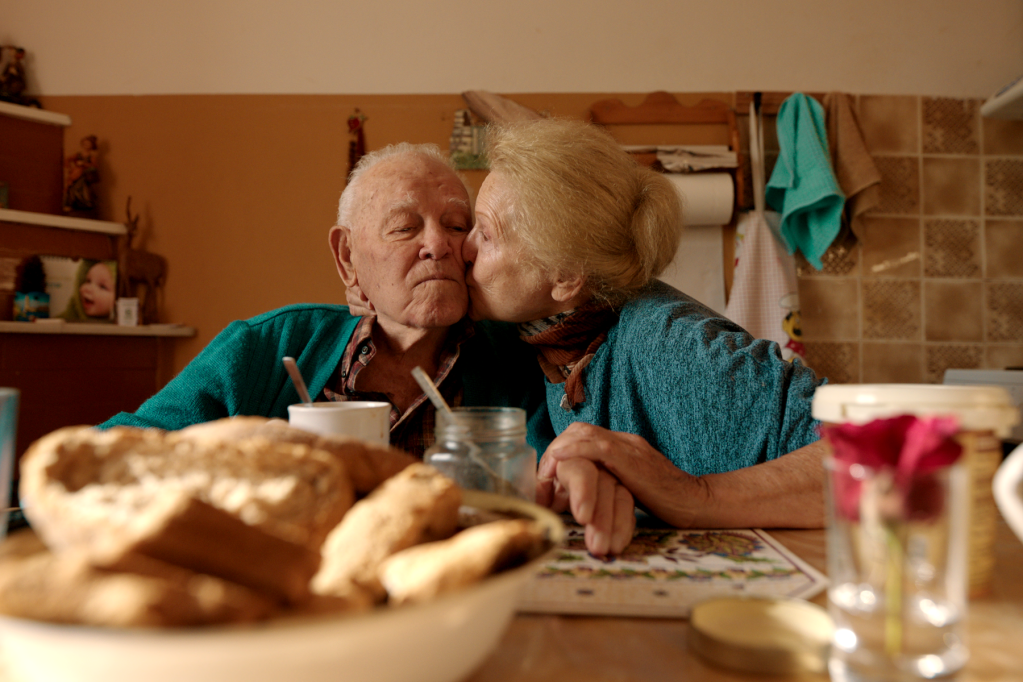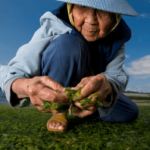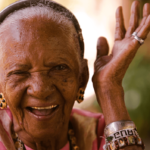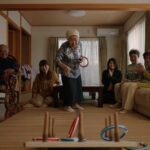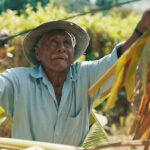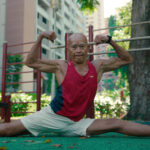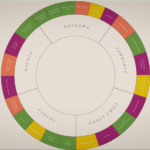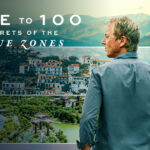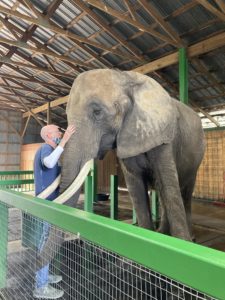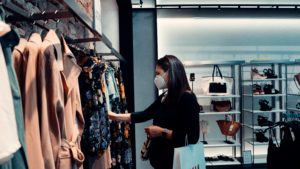Have you heard of the Blue Zones? The Blue Zones are 5 parts of the world (Okinawa, Japan, Ikaria, Greece, Sardinia, Italy, Nicoya, Costa Rica, and Loma Linda, California), where people live the longest, and happiest lives, and have the highest number of centenarians (people who live to 100 and beyond). The docuseries, Live to 100: Secrets of the Blue Zones, is based on the wonderful work of Dan Buettner, who is a three-time Guinness World Record Distance Cycle Holder, and storyteller extraordinaire. Mr. Buettner and his team have traveled all over the globe to share the lessons, and wisdom, of the longest living people on the planet.
Okay, so here is the Good, the Bad, and the Ugly on Live to 100: Secrets of the Blue Zones (4 Netflix episodes):
THE GOOD (takeaways):
Whole Food Plant Based Diets – The longest and happiest living people from the Blue Zones eat diets that are 90-100% whole-food, plant-based! We know from the work of Dr. T. Colin Campbell, and countless studies, that people who adopt a whole food plant based diet (along with moderate exercise, not smoking, and watching their weight) will reduce their chances of developing a chronic disease by close to 80%. Wow! But it doesn’t end there, as most Blue Zone residents have also learned to stop eating when they are about 80% full (a practice that I have yet to master), and to surround themselves with loved ones during chow-time.
Daily Routines are the Best Form of Exercise for Blue Zone Inhabitants – Okinawa, Japan, is one of the 5 blue zones where people live the longest and healthiest lives, and it is also home to the world’s longest-lived women. People in Okinawa traditionally sit on the floor to work, eat, talk and relax. In other words, for many Okinawans, getting up and down off the floor throughout the day is not just a big part of their routine, but it also provides their daily workout as well. In one of his TED Talks, Dan Buettner tells the story of a 100+ year old woman who gets up off the floor over 100 times during the day! So, whether it is gardening, chopping wood, walking up and down hilly terrain, herding animals, or being active while sitting on the floor, people living in the Blue Zones, incorporate their exercise needs into their daily routines. Gyms? Health clubs? Who needs ’em when you live in a Blue Zone! 🙂
Social Interactions & Love – The Blue Zones research provides more evidence that consistent and healthy social interactions keep you alive longer. As per Dan Buettner, people living in a Blue Zones community “put their families first and keep aging parents nearby…They tend to belong to a faith-based community, and they surround themselves with people who reinforce healthy behaviors.”
My Take: Did you know that Nearly 60% of American teenage girls report feelings of “persistent sadness and hopelessness”, with 30% saying that they have seriously considered suicide? Depression now affects more than 1/3 of all US children of all races and ethnicities. The numbers are the worst among LGBTQ, Native American, and Alaska Native youth as half of these kids report depression and unrelenting sadness. Suicide is the second leading cause of death among people ages 10-24, and has been increasing every year since 2007. Suicide rates and loneliness are also at all time highs across many age groups in the United States. As per Dr. Dean Ornish, “People who are lonely and depressed are three to 10 times more likely to get sick and die prematurely than those who have a strong sense of love and community…Love and Intimacy Are Healing, Loneliness and Isolation Are Deadly…The need for authentic connection and community is primal, as fundamental to our health and well-being as the need for air, water, and food.”
Purpose – According to Dan Buettner, people living in the Blue Zone communities know their purpose and live by it. And by purpose, he means, ‘being clear on your values, knowing what you’re good at, and finding an outlet that provides some good for the rest of the world or helps other people.” As per the Blue Zones website, “Okinawans call it ikigai or “reason for being.” Costa Ricans call it “plan de vida.” Most commonly, though, it’s simply referred to as your life’s purpose. In the blue zones regions of the world, purpose has always played a major role in well-being and the resulting extreme longevity. It’s also believed that the strong sense of purpose possessed by older Okinawans may act as a buffer against stress and help reduce overall inflammation, in turn lowering chances of suffering from Alzheimer’s disease, arthritis, and stroke. There continues to be a growing body of research to support the impact of purpose on mental and physical health and how it can lead to longer life expectancy…Dr. Robert Butler, the first director of the National Institute on Aging, estimated that an ability to define your life meaning adds to your life expectancy. Dr. Butler and collaborators led an NIH-funded study in 2014 that looked at the correlation between having a sense of purpose and longevity. His study found that individuals who expressed a clear goal in life—something to get up for in the morning, something that made a difference—lived longer and were sharper than those who did not.”
THE BAD
– I may be nitpicking here, but the docuseries only skimmed the surface regarding the health risks of consuming animal products (regardless of their origin), as there was no mention made of the dangers of animal protein.
Click here to learn more about the toxicity of animal protein from The China Study.
Click here to learn more from Dr. T. Colin Campbell on how animal protein is carcinogenic.
Click here to learn more from Dr. Brooke Goldner on why the consumption of animal products is bad for you.
– The docuseries features “nutritionist” and “public health advocate”, Marion Nestle.
My Take: I don’t understand the popularity of Marion Nestle. She has made so many untrue statements in recent years that I can’t keep track anymore. I know that she seems like an otherwise nice person, and that she has done important work too, but when she appears in these documentaries, I instantly question everything that I am about to hear. Here are just a few Marion Nestle gems from a lecture I attended at NYU last year (I have shared these before): 1.“I think animals have a place in the diet, and the question is how to have them have a smaller place.” 2. “groups who don’t eat any animal products, don’t care at all about dairy farmers.” 3. “People like me, who like cheese and ice cream (changes her vocal tone to baby talk). I’m sorry, but I do (crowd giggles)…” 4. “small amounts of meat, they make people healthier.” Yikes. Well, you get the idea.
Click here to learn why promoting plant-based nutrition is the moral imperative of the medical profession.
THE UGLY
– The docuseries doesn’t mention that Okinawa, Japan, may soon no longer qualify as a Blue Zone location, mainly due to the presence of US military bases.
My Take: Okinawa is now a far less sustainable and health promoting region of the world, due in part, to the presence of 32 US military bases, and other western influences, which have resulted in local markets carrying more of the animal cruelty, and health harming foods, that are typical of the Standard American Diet (SAD). These military bases (there are nearly 30,000 active-duty US military people living in Okinawa), have created all kinds of problems, including an unhealthy food system, damage to the environment, and a long list of appalling crimes committed by US soldiers against the local population. Credit should be given to the Blue Zones website, for at least mentioning a military base as a root cause of declining health in Okinawa. As per their website, “Unfortunately, with the Western influence and presence of a U.S. military base, lifestyle changes have led to Okinawa being one of the least healthy prefectures in Japan. There is a 20 percent obesity rate there, whereas Japan overall has a 3-4 percent obesity rate. Okinawa is still much healthier than the U.S. where the rate is 40 percent or higher, but it is a substantial change that took place over the last few decades and Okinawa’s youth may not enjoy the longevity of their parents and grandparents.”
Click here for the Blue Zones article that explains the rising obesity rates in Okinawa.
Click here to learn more about a hunger strike demanding an end to US bases in Okinawa.
Click here to learn more about the anti-US military base movement in Okinawa.
Click here to learn more about how US military bases are poisoning Okinawa.
– The ending of the film suggests that 330 million Americans control public policy.
My Take: Barring a revolution (hey, I can dream), this is simply not true. Most public policy decisions in the United States are determined by powerful corporations, and billionaires. According to researchers at Northwestern and Vanderbilt Universities, “Historically oriented scholars have long argued that “major investors” or business elites dominate the making of public policy and the agendas of both the Republican and the Democratic parties. Jeffrey Winters maintains that the top one-tenth of 1 percent of US wealth-holders constitute an “oligarchy” with decisive power over certain key policy areas related to what he calls “income defense…We report the results of a pilot study of the political views and activities of the top 1 percent or so of US wealth-holders. We find that they are extremely active politically and that they are much more conservative than the American public as a whole with respect to important policies concerning taxation, economic regulation, and especially social welfare programs. Variation within this wealthy group suggests that the top one-tenth of 1 percent of wealth- holders (people with $40 million or more in net worth) may tend to hold still more conservative views that are even more distinct from those of the general public. We suggest that these distinctive policy preferences may help account for why certain public policies in the United States appear to deviate from what the majority of US citizens want the government to do. If this is so, it raises serious issues for democratic theory.” Perhaps the two best examples of corporations and billionaires controlling public policy (to the detriment of US citizens, and our only planet), are America’s broken “Healthcare” system (which ranks dead last amongst all industrialized countries), and the US Military Industrial Complex (according to peace activist Matthew Hoh (via the Congressional research service), since 1991, the United States has been engaged in 250 military operations overseas). Most Americans have wanted universal healthcare, and world peace for decades, but none of that matters to the criminal state, and the billionaires and corporations who determine public policy.
Interestingly, and independent of the Blue Zones research, people who live in Social Democracies (a political ideology within socialism), are the happiest people on the planet, according to the 2024 World Happiness Report (compiled by Oxford University & the United Nations). Finland and other social democracies finished at the top, while the neoliberal United States dropped to 23rd. “It all begins with high levels of trust between citizens and our institutions”, said one Finland official. In social democracies, people have a say in government actions, and work to reform capitalist economies, while also helping everyone in need by providing healthcare, education, and social welfare.
The Bottom Line? Despite its flaws, Live to 100: Secrets of the Blue Zones, is still an excellent docuseries. Dan Buettner and his team have done it again. Overall grade? A strong B+ of course!
Sources:
Click here for the Live to 100: Secrets of the Blue Zones Trailer.
Click here for Dan Buettner’s excellent TED Talk.
Click here for the Healthy Living is the Best Revenge Study.
Click here for the top 20 habits for a healthier, happier life from the Blue Zones website.
Click here to learn more from the Blue Zones on how you can make happiness a habit.
Click here to learn more about the link between happiness, health, and literacy.
Click here for a review of the documentary from an Adventist’s perspective.
Click here to learn more about the Villains who make Billions.
Click here to learn more about public policy from Northwestern & Vanderbilt Universities.
Click here for the 2024 World Happiness Report.
Click here to learn more about the 2024 World Happiness Report from Common Dreams.

